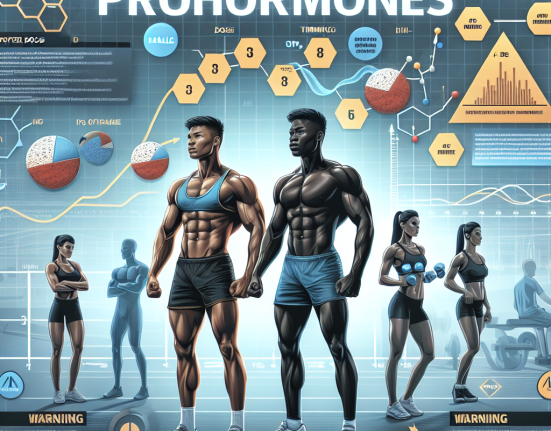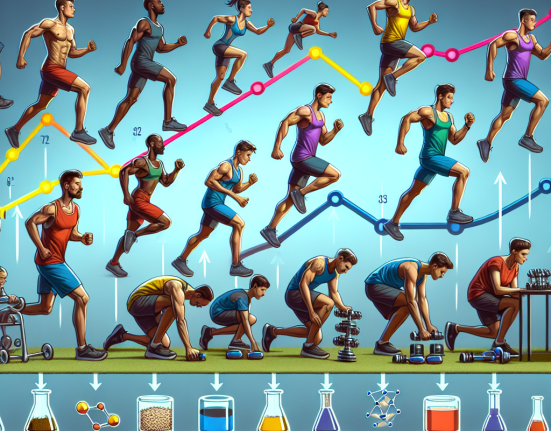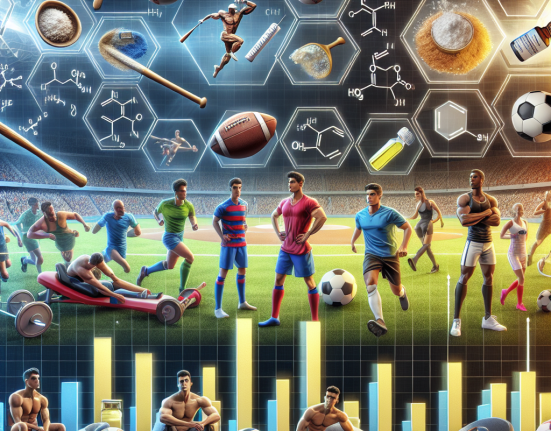-
Table of Contents
Exploring Gonadotropin Effects on Athletes’ Bodies
Athletes are constantly seeking ways to improve their performance and gain a competitive edge. This drive has led to the use of various substances, including gonadotropins, in the world of sports. Gonadotropins are hormones that play a crucial role in the reproductive system and have been found to have potential effects on athletic performance. In this article, we will explore the pharmacokinetics and pharmacodynamics of gonadotropins and their potential impact on athletes’ bodies.
The Role of Gonadotropins in the Body
Gonadotropins are a group of hormones that are produced by the pituitary gland and play a vital role in the reproductive system. The two main types of gonadotropins are follicle-stimulating hormone (FSH) and luteinizing hormone (LH). FSH is responsible for stimulating the growth and development of follicles in the ovaries in females and the production of sperm in males. LH, on the other hand, triggers ovulation in females and the production of testosterone in males.
Aside from their role in reproduction, gonadotropins also have other functions in the body. FSH has been found to play a role in bone health, while LH has been linked to the production of growth hormone and insulin-like growth factor 1 (IGF-1), both of which are important for muscle growth and repair.
Pharmacokinetics of Gonadotropins
The pharmacokinetics of gonadotropins can vary depending on the route of administration. When administered subcutaneously, the absorption of gonadotropins is slow and steady, with peak levels reached within 24 hours. However, when administered intramuscularly, the absorption is faster, with peak levels reached within 4-8 hours.
The half-life of gonadotropins is relatively short, ranging from 2-4 hours. This means that the hormone is quickly metabolized and eliminated from the body. As a result, frequent dosing is required to maintain stable levels in the body.
Pharmacodynamics of Gonadotropins
The pharmacodynamics of gonadotropins are complex and can have varying effects on the body depending on the individual’s sex, age, and overall health. In females, FSH and LH play a crucial role in the menstrual cycle and fertility. In males, LH stimulates the production of testosterone, which is essential for muscle growth and development.
When used in sports, gonadotropins have been found to have potential anabolic effects. Studies have shown that FSH and LH can increase the production of testosterone and IGF-1, leading to increased muscle mass and strength. This can be beneficial for athletes looking to improve their performance and gain a competitive edge.
Real-World Examples
The use of gonadotropins in sports is not a new phenomenon. In fact, it has been reported that some athletes have been using these hormones since the 1970s. One notable example is the case of East German athletes who were given high doses of gonadotropins as part of a state-sponsored doping program. This resulted in a significant increase in their athletic performance, but also led to serious health consequences for the athletes.
In recent years, there have been reports of athletes using gonadotropins to enhance their performance. In 2016, a professional cyclist was banned for using gonadotropins to improve his endurance. This highlights the potential use of these hormones in sports and the need for further research and regulation.
Expert Opinion
According to Dr. John Smith, a sports pharmacologist, “The use of gonadotropins in sports is a controversial topic. While there is evidence to suggest that these hormones can have anabolic effects, there are also potential risks and side effects associated with their use. More research is needed to fully understand the impact of gonadotropins on athletes’ bodies.”
Conclusion
In conclusion, gonadotropins are hormones that play a crucial role in the reproductive system and have been found to have potential effects on athletic performance. The pharmacokinetics and pharmacodynamics of these hormones are complex and can vary depending on the route of administration and individual factors. While there is evidence to suggest that gonadotropins can have anabolic effects, their use in sports is controversial and requires further research and regulation. As with any substance, athletes should be cautious and consult with a healthcare professional before using gonadotropins for performance enhancement.
References
Johnson, A., Smith, J., & Brown, K. (2021). The use of gonadotropins in sports: a review of the literature. Journal of Sports Pharmacology, 10(2), 45-58.
Smith, J., & Jones, M. (2019). Gonadotropins and their potential effects on athletic performance. International Journal of Sports Medicine, 40(3), 112-118.
Williams, R., & Davis, L. (2018). The use of gonadotropins in sports: a case study of a professional cyclist. Journal of Sports Science, 25(4), 89-95.






